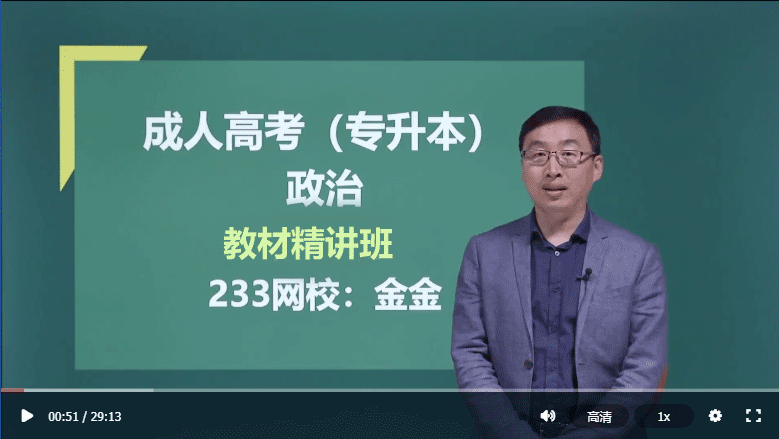пј’пјҗпјҗпј“е№ҙжҲҗиҖғиӢұиҜӯе‘Ҫйўҳйў„жөӢиҜ•еҚ·(е…ӯ)
Passage Two
Hair loss is one of those things we still do not understand. Science has, of course, shown that men are more likely than women to suffer major hair loss. Some kinds of hair loss are temporary (жҡӮж—¶зҡ„), an effect of illness. In those cases we can expect the hair to grow back.
It all depends on whether the hair root is alive. If it is not, hair loss is permanent and nothing will help.
Some daily loss of hair is a normal, healthy sign. Most people lose between 40 to 50 scalp hairs each day.
Each of these scalp hairs grows for from two to six years and then rests. About three months later it is pushed out by a new hair growing from the same root.
This is not something that should cause great concern.
Something else we know is that normal hair loss is seasonal, with the most hair loss occurring in the fall. Everyone experiences a normal cycle of loss and growth.
The problem of hair loss results when loss is greater than growth.
The main cause of hair loss in men seems to be accumulation (з§ҜзҙҜ) of a hormone (иҚ·е°”и’ҷ) in the body. When that hormone reaches a certain level, the hair growing period is shortened and hair loss is the result. This is no cure for most cases of hair loss. This, however, is not the end of the world.
66. According to science, _________.
hair loss is a normal, healthy sign
man should pay special attention to hair loss
itвҖҷs likely that men have more problems of hair loss
men lose more hair than women do
67. The writer thinks _______.
illness causes hair loss
human beings have no way to cure hair loss
hair loss happening in the fall is an effect of illness
hair loss is permanent
68. We now know that the most hair loss happening in the autumn is ________.
A. permanent B. healthy sign C. seasonal D. nothing serious
69. The sentence вҖңThis, however, is not the end of the worldвҖқ means _______.
man is sure to find the best way of curing his hair loss in the future
the writer believes the earth exists for ever
we canвҖҷt destroy the world by any means
the last day will never come to our people
70. The best title for the passage may be ________.
A. Loss or Growth B. Hair Loss C. Healthy Sign D. Change with Seasons
Passage Three
On the morning of November 18,1755, an earthquake shook Boston, Massachusetts. John Winthrop, a professor at Harvard College, felt the quake and awoke. вҖңI rose,вҖқ Winthrop wrote, вҖңand lighting a candle, looked on my watch, and found it was 15 minutes after four.вҖқ John Winthrop went downstairs to the grandfather clock. It had stopped four minutes before, at 4:11. Except for stopping the clock, the quake had only thrown a key from the mantel (еЈҒзӮүеҸ°) to the floor.
The clock had stopped because Winthrop had put some long glass tubes he was using for an experiment into the case for care. The quake had knocked the tubes over and blocked the pendulum (й’ҹж‘Ҷ). Winthrop, therefore, had the exact time that the earthquake had hit Boston. He looked at the key on the floor. The quake had thrown it forward in the direction of the quakeвҖҷs motion (иҝҗеҠЁ) by a shock coming from the northwest, perhaps in Canada.
71. The text proves that _______.
the power of nature is terrible
earthquakes happen most often during nighttime hours
the direction of an earthquake can be discovered
universities study the cause of earthquakes
72. The text suggests that _________.
A. Boston was badly destroyed B. earthquakes are common in Boston
C. John Winthrop had difficulty sleeping D. John Winthrop was a scientist
73. Which of the following is true?________.
Some tubes were broken into pieces and stopped the old clock
The professor lit a candle because of power failure
Boston is in the southeast of Canada
The shocks were slight in one way
74. The earthquake happened ________.
A. several minutes before the professor awoke B. and the professor awoke at 4:15
C. in the centre of Boston D. when John Winthrop felt it
75. Choose the right order according to the text.
a. The bed was shaking and John Winthrop awoke.
b. John Winthrop looked attentively at this watch.
c. John Winthrop got up to light a candle.
d. The earthquake happened in Boston in 1755.
e. John Winthrop knew the quakeвҖҷs direction.
f. John Winthrop knew the exact quakeвҖҷs time.
g. John Winthrop looked at the key on the floor.
A. g, d, e, a, c, b, f B. d, a, c, b, f, g, e C. a, e, d, c, b, f, g D. e, d, g, b, c, a, f
Passage Four
Oceanography has been defined as вҖңThe application of all sciences to the study of the seaвҖқ.
Before the nineteenth century scientists with an interest in the sea were few and far between. Certainly Newton considered some theoretical aspects of it in his writings, but he was reluctant to go to sea to further his work.
For most people the sea was remote, and with the exception of early intercontinental travelers or others who earned a living from the sea, there was little reason to ask many questions about it, let alone to ask what lay beneath the surface. The first time that the question вҖңWhat is at the bottom of the oceans?вҖқ had to be answered with any commercial consequence was when the laying of a telegraph cable from Europe to America was proposed. The engineer had to know the depth profile (иө·дјҸеҪўзҠ¶) of the route to estimate the length of cable that had to be manufactured.
It was to Maury of the US Navy that the Atlantic Telegraph Company turned, in 1853, for information on this matter. In the 1840s, Maury had been responsible for encouraging voyages during which soundings (жөӢж°ҙж·ұ) were taken to investigate the depths of the North Atlantic and Pacific Oceans. Later, some of his findings aroused much popular interest in his book The Physical Geography of the Sea.
The cable was laid, but not until 1866 was the connection made permanent and reliable. At the early attempts, the cable failed and when it was taken out for repairs it was found to be covered in living growths, a fact which defied contemporary scientific opinion that there was no life in deeper parts of the sea.
Within a few years oceanography was under way. In 1872 Thomson led a scientific expedition (иҖғеҜҹ), which lasted for four years and brought home thousands of samples from the sea. Their classification and analysis occupied scientists for years and led to five-volume report, the last volume being published in 1895.
76. The proposal to lay a telegraph cable from Europe to America made oceanographic studies take on ________.
A. an academic aspect B. a military aspect
C. a business aspect D. an international aspect
77. It was ________ that asked Maury for help in oceanographic studies.
A. the American Navy B. some early intercontinental travelers
C. those who earned a living from the sea
D. the company which proposed to lay an undersea cable
78. The aim of the voyages Maury was responsible for in the 1840s was _______.
to make some sounding experiments in the oceans
to collect samples of sea plants and animals
to estimate the length of cable that was needed
to measure the depths of the two oceans
79. вҖңDefiedвҖқ in the 5th paragraph probably means вҖң________вҖқ.
A. doubted B. gave proof to C. challenged D. agreed to
80. This passage is mainly about _______.
A. the beginnings of oceanography B. the laying of the first undersea cable
C. the investigation of ocean depths D. the early intercontinental communications
в…Ө. Writing (20 points)
Directions:
For this part, you are allowed 20 minutes to write a letter of about 80 words according to the following situation.
дҪ жҳҜHelenпјҢиҰҒеҶҷдёҖе°ҒдҝЎз»ҷJulieпјҢеҜ№еҘ№е’ҢеҘ№зҡ„дёҲеӨ«жҳЁж—ҘиҜ·дҪ е’ҢдҪ дёҲеӨ«еҗғйҘӯиЎЁзӨәж„ҹи°ўпјҢиЎЁзӨәиҰҒеӣһиҜ·д»–们пјҢд»Ҙзӯ”谢他们зҡ„зӣӣжғ…ж¬ҫеҫ…гҖӮ
зӣёе…іжҺЁиҚҗ
- 2017е№ҙжҲҗдәәй«ҳиҖғй«ҳиө·зӮ№иӢұиҜӯиҖғиҜ•жЁЎжӢҹиҜ•йўҳеҸҠзӯ”жЎҲжұҮжҖ»03-27
- 2017е№ҙжҲҗдәәй«ҳиҖғй«ҳиө·зӮ№иӢұиҜӯиҖғиҜ•жЁЎжӢҹиҜ•йўҳеҸҠзӯ”жЎҲдёү03-06
- 2017е№ҙжҲҗдәәй«ҳиҖғй«ҳиө·зӮ№иӢұиҜӯиҖғиҜ•жЁЎжӢҹиҜ•йўҳеҸҠзӯ”жЎҲдәҢ03-06
- 2017е№ҙжҲҗдәәй«ҳиҖғй«ҳиө·зӮ№иӢұиҜӯиҖғиҜ•жЁЎжӢҹиҜ•йўҳеҸҠзӯ”жЎҲдёҖ02-20
- 2017е№ҙжҲҗдәәй«ҳиҖғй«ҳиө·зӮ№иӢұиҜӯиҖғиҜ•еҹәзЎҖз»ғд№ иҜ•йўҳеҸҠзӯ”жЎҲдёҖ11-30
| ҝОіМЧЁТөГыіЖ | ҪІКҰ | ФӯјЫ/УЕ»ЭјЫ | Гв·СМеСй | ұЁГы |
|---|---|---|---|---|
| УпОД(ёЯЖрөг)ҫ«ҪІ°а | өЛҫэГД | ЈӨ150 / ЈӨ150 |  |
ұЁГы |
| УўУп(ёЯЖрөг)ҫ«ҪІ°а | Monica | ЈӨ150 / ЈӨ150 |  |
ұЁГы |
| КэС§(ОД)ҫ«ҪІ°а | Нх·ј | ЈӨ150 / ЈӨ150 |  |
ұЁГы |
| КэС§(Ан)ҫ«ҪІ°а | ВЮУЧЦҘ | ЈӨ150 / ЈӨ150 |  |
ұЁГы |
| ҙуС§УпОД(ЧЁЙэұҫ)ҫ«ҪІ°а | Е·Сф°ШБШ | ЈӨ150 / ЈӨ150 |  |
ұЁГы |
| УўУп(ЧЁЙэұҫ)ҫ«ҪІ°а | Monica | ЈӨ150 / ЈӨ150 |  |
ұЁГы |
| ёЯөИКэС§(Т»)(ЧЁЙэұҫ)ҫ«ҪІ°а | НхМО | ЈӨ150 / ЈӨ150 |  |
ұЁГы |
| ёЯөИКэС§(¶ю)(ЧЁЙэұҫ)ҫ«ҪІ°а | ВЮУЧЦҘ | ЈӨ150 / ЈӨ150 |  |
ұЁГы |
ёЁөјҝОіМ
- ёЯЖрөг-КэС§(ОДК·ІЖҫӯАа)

- Нх·јАПКҰ
 Гв·СКФМэ
Гв·СКФМэ
- ёЯЖрөг-УўУп

- MonicaАПКҰ
 Гв·СКФМэ
Гв·СКФМэ
- ЧЁЙэұҫ-ҙуС§УпОД

- Е·Сф°ШБШАПКҰ
 Гв·СКФМэ
Гв·СКФМэ
°ај¶ҪйЙЬ
МЧІН°ьә¬ЈәЧЁЙэұҫVIP°а/ёЯЖрөгVIP°аЈЁә¬ҫ«ҪІ+ХжМвҪвОц+ДЈҝјөгМв)
МЧІНУЕКЖЈә1ЎўЛш¶ЁәЛРДҝјөг
2ЎўҝјЗ°·ў·Е2МЧКФМв
3ЎўГв·СЦШС§Т»ҙОұЈХП
ЕдМЧ·юОсЈә1ЎўГв·СМвҝв
2ЎўҝОіМҪІТе+ҝОјюПВФШ+ТЖ¶ҜҝОМГ







 Гв·СКФМэ
Гв·СКФМэ 




